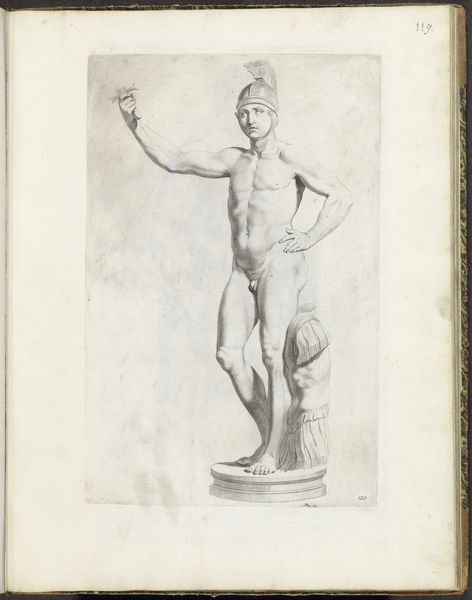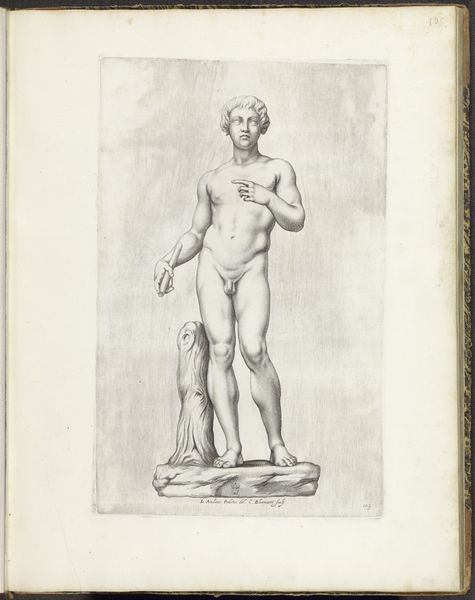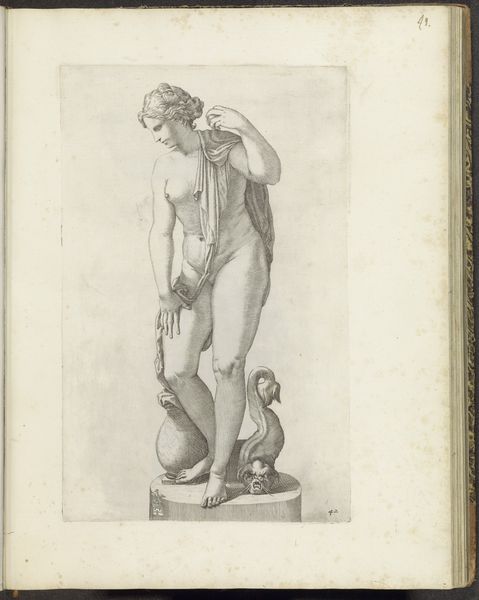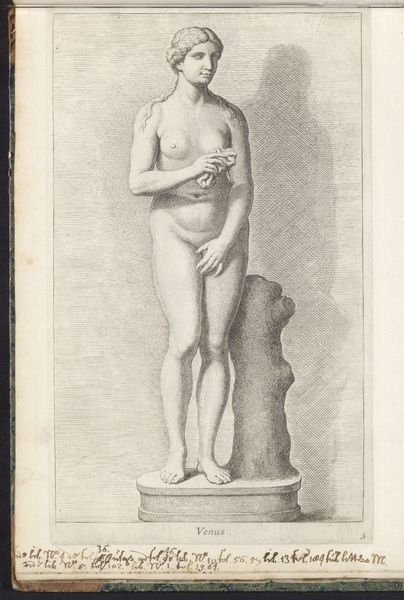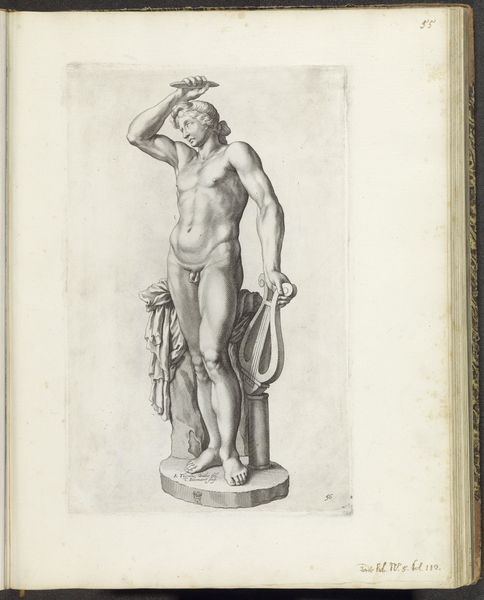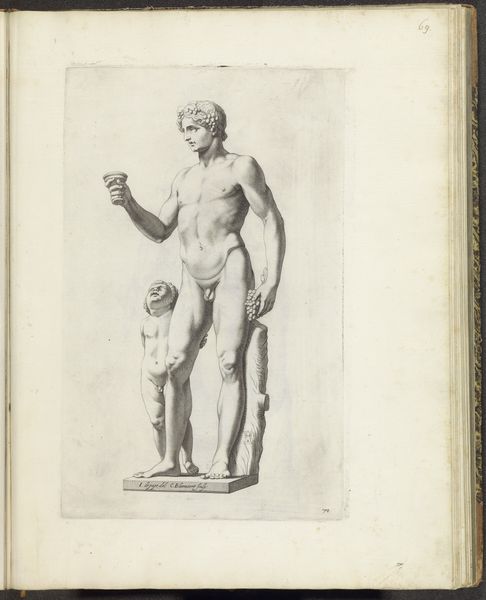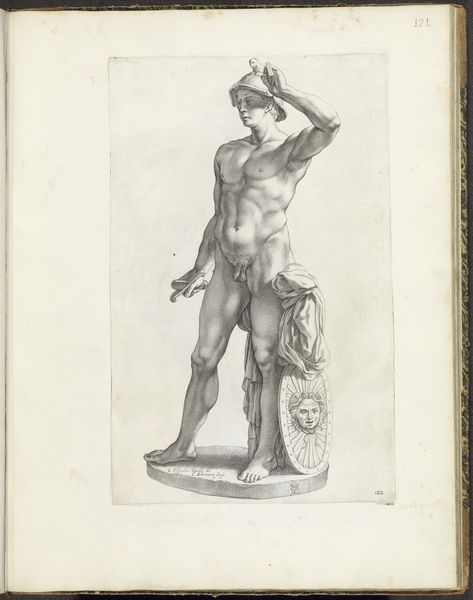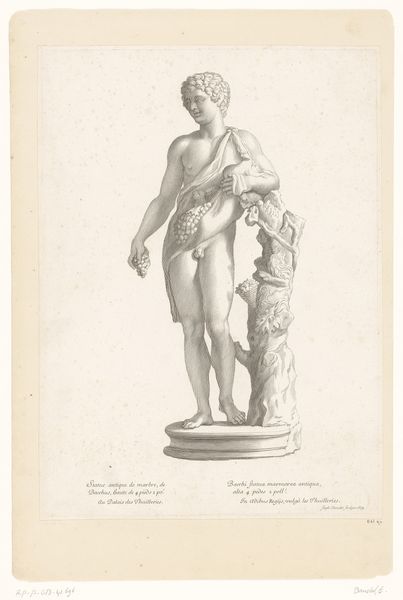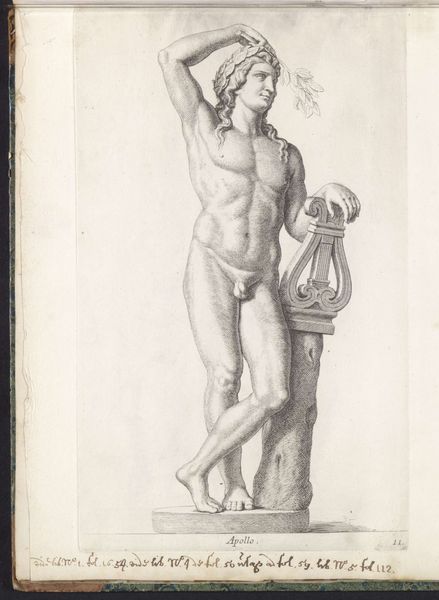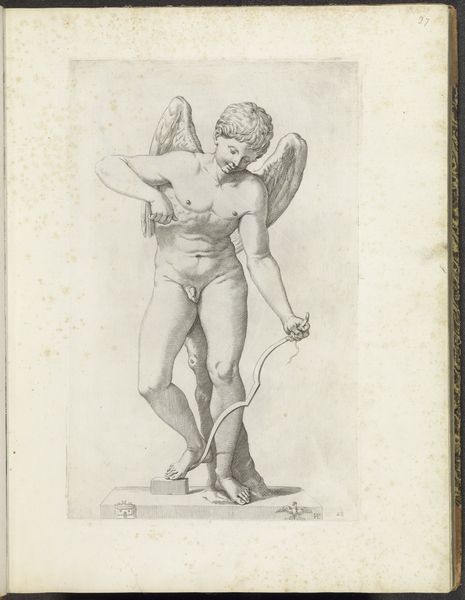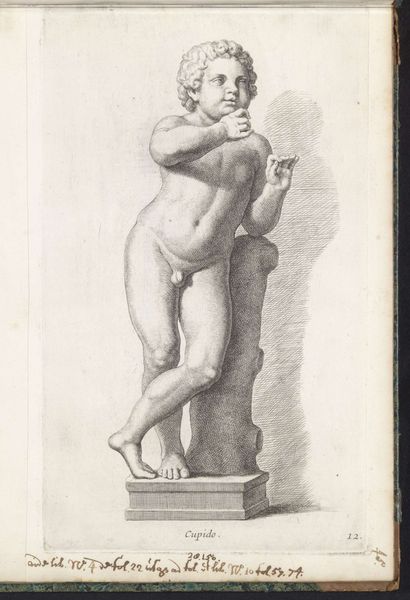
drawing, paper, pencil
#
portrait
#
pencil drawn
#
drawing
#
baroque
#
pencil sketch
#
figuration
#
paper
#
pencil drawing
#
pencil
#
academic-art
Dimensions: height 370 mm, width 235 mm
Copyright: Rijks Museum: Open Domain
This engraving of a statue of Harpocrates was made by Cornelis Bloemaert in the Netherlands in the seventeenth century. Harpocrates, the god of silence, was often depicted as a child with his finger to his lips. Bloemaert’s engraving is a copy of an antique sculpture. During the Renaissance and Baroque eras, the rediscovery of classical antiquity influenced art, literature, and philosophy. Wealthy collectors acquired Roman sculptures, sometimes displayed in private museums or “cabinets of curiosities”. Engravings like this one allowed a wider audience to engage with classical art, fueling intellectual and artistic trends. The image itself creates meaning through visual codes. Here, the cornucopia, the snake, and the finger on the lips all carry symbolic significance. Seventeenth-century viewers steeped in classical culture would understand these references, and would consider the meanings and values they conveyed. Understanding this artwork requires historical research into the cultural context of the time. What did the Dutch think of the Romans? And how did they use images of antiquity to shape their own cultural identity?
Comments
No comments
Be the first to comment and join the conversation on the ultimate creative platform.


